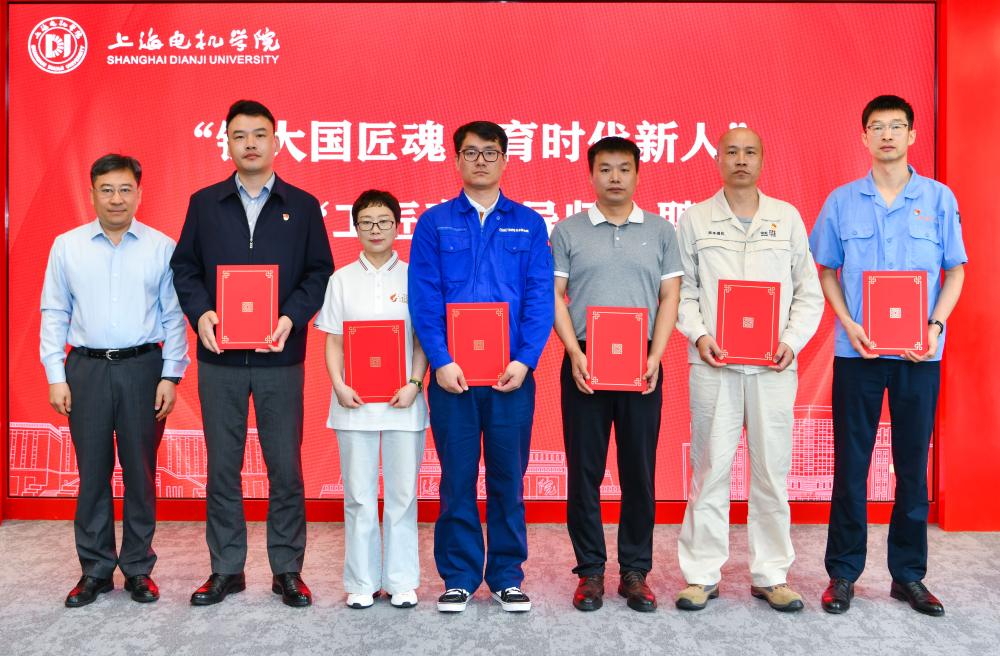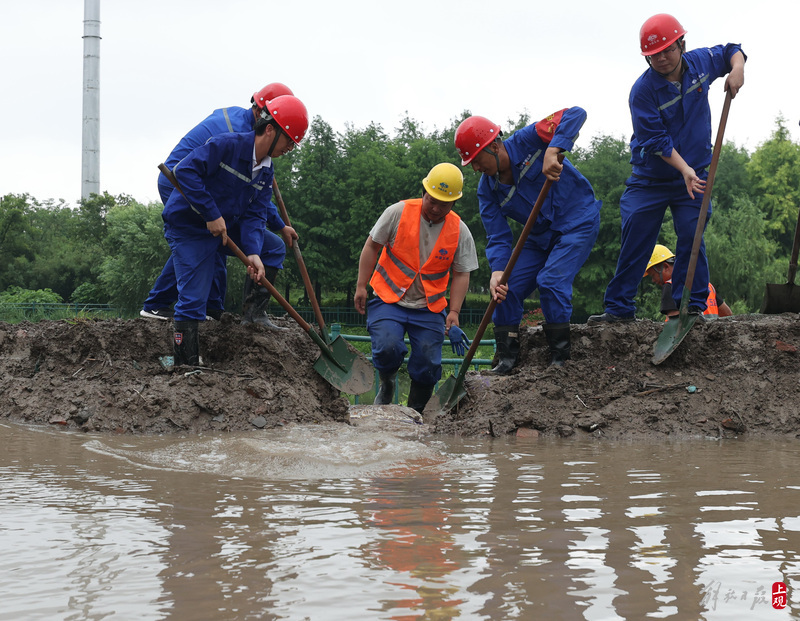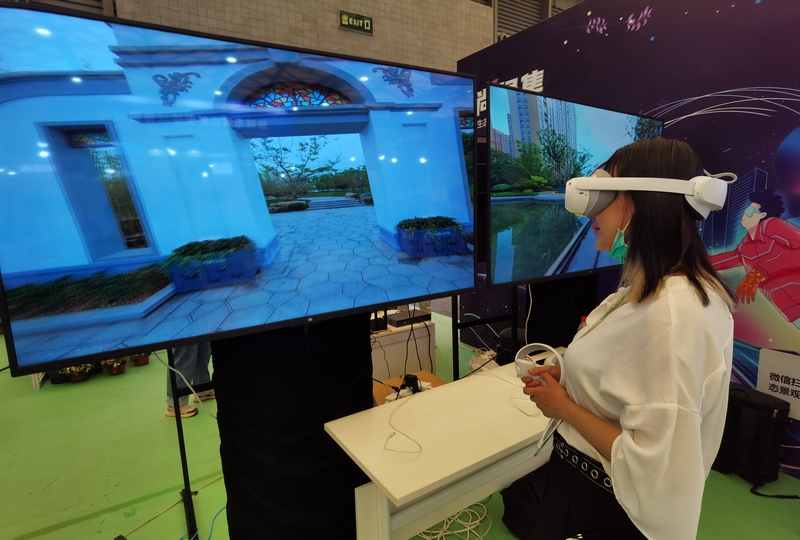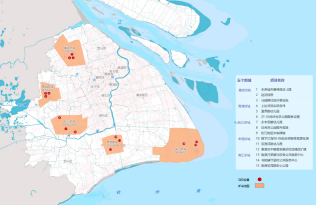Regarding important issues such as lunar bases, deep space exploration, and giant constellations, aerospace experts have released a series of latest achievements
In Liu Cixin's novel "The Three Body Problem," the Centaur constellation of the Three Body Problem is located 4.2 light-years away from Earth, and the Three Body Fleet takes 400 years to reach Earth. Nowadays, science fiction is shining into reality, and human probes are starting from Earth, heading deeper and further into the moon, Jupiter, the sun, and space, exploring the unknown world.
This year, China announced the launch of the Chinese manned lunar exploration project's lunar landing phase mission, and the "underground world" of the moon may become a new choice for human lunar bases. Not only will China land on the moon, but there will also be progress in exploring the sun. During the 14th Five Year Plan period, China will focus on promoting the implementation of the Xihe 2 solar exploration project. The above is the news obtained by the reporter at the 10th International Conference on Aerospace Technology Innovation on September 14th.
How to build a manned lunar base in China? How to move deeper and farther into space? Experts and scholars from countries and regions such as the UK, France, Italy, South Korea, Singapore, as well as China, presented a series of latest research achievements in the field of aerospace.
Open the underground "gate" of the moon
This year, China announced that the lunar landing phase of China's manned lunar exploration project has been launched, and humanity is entering a new era of lunar exploration and development.

Zhang Chongfeng, Deputy Chief Designer of the China Manned Space Engineering Shenzhou spacecraft, Deputy Chief Designer of the Lunar Exploration Lander, and Standing Committee Member of the Science and Technology Committee of the Shanghai Aerospace Technology Research Institute of China Aerospace Science and Technology Group Co., Ltd., brought his team's research on lunar volcanic lava pipeline caves and further explored the feasibility of using lunar lava pipeline caves for the subsequent construction of lunar research stations.
The so-called volcanic lava pipeline cave is a relatively stable and flat internal space similar to a tunnel formed by the cooling of underground lava flow during the early geological activity of the Moon.
Zhang Chongfeng said, "Due to years of geological activity, impact events, and lunar earthquakes, some shallow volcanic lava pipelines have formed accessible 'skylights' after collapsing, opening the door for us to explore the underground world of the moon."
Inside typical lava pipelines on Earth
Why did you think of using lava pipes and caves on the moon to establish a lunar research base?

"Compared to Earth, the moon has almost no atmosphere, and the resulting huge temperature difference between day and night, high-intensity cosmic radiation, and impacts from micro meteorites all pose safety risks for humans to establish long-term scientific research bases on the lunar surface." Zhang Chongfeng said that the interior of the melt provides huge space, and compared to the extreme environment of high and low temperature changes on the lunar surface, the interior of the melt is relatively constant temperature; It can be said that lunar craters naturally provide protection against radiation, meteorite impacts, and lunar dust.
In recent years, the team led by Zhang Chongfeng and experts in the field of planetary geology in China have jointly conducted on-site inspections of multiple lunar caves, gradually establishing an understanding and understanding of the structure of lunar caves. "The lunar melt has certain similarities with the Earth's melt, and can be divided into two types based on the different entry methods of the melt: vertical melt and slope melt."
Vertical melt cavity
Vertical entrance is currently the main form of lunar melt discovered, characterized by the presence of a collapsed skylight with a large amount of collapsed debris and soil accumulation at the bottom, which requires the deployment of vertical lifting facilities or the use of flying methods to enter; The sloping entrance belongs to a semi collapsed structure, so there is a possibility of entering the interior of the melt directly along the collapsed structure, which is the preferred target for early entry through lunar mobile detectors.
Slope melt cave

However, exploring lunar craters will be the first time humans have entered the underground space of extraterrestrial objects. The passage and entry of extreme terrains, navigation and exploration in dark environments, communication and energy support inside the craters are all multiple challenges that must be faced and overcome. Therefore, the team focused on selecting two lunar craters, Jinghai and Zhongfengfu, as the main exploration targets and carried out the design of exploration plans.
"We are developing a 'master-slave' detector with multiple detection modes and diverse entry capabilities, as well as constructing auxiliary facilities such as energy and communication, to meet the needs of molten cave entry and detection. This will form a '1+N+N' three-dimensional composite detection capability," said Zhang Chongfeng.
Specifically, the main detector will prioritize the use of foot and wheeled foot mobile systems, which have good terrain adaptability in complex terrain environments, as well as obstacle crossing and avoidance capabilities. It will carry detachable auxiliary detectors and provide relay communication and energy support. At the same time, the main detector will also be equipped with scientific detection payloads, which can detect the external and entrance environment of the melt, terrain, material composition, etc.
Ground prototype of combined melt detection system
According to the different requirements of the task, the selection of auxiliary detectors is more diverse. For example, for extreme terrains such as steep slopes, collapses, and gravel that may exist inside the melt, different forms of auxiliary detectors such as biomimetic multi legged crawling, bouncing, rope tying, and rolling can be selected. Auxiliary detectors also carry scientific detection payloads, which can detect temperature, radiation, lunar dust, soil composition, water ice, etc. inside the melt.

"In addition, for karst caves with rugged terrain and large drop, a direct flight probe can also be adopted to achieve autonomous obstacle avoidance flight in dark environments by configuring microwave radar and ring scanning LiDAR." Zhang Chongfeng said.
In response to the vision of building a manned lunar base in the future, Zhang Chongfeng also proposed a plan for the construction of a lunar melt base: establishing an energy and communication support center at the entrance of the cave; Deployment of facilities and personnel entry and exit channels; Carry out terrain transformation, deploy cabins inside the melt and construct research and residential cabins in situ, and build a long-term operational lunar underground research base.
Heading deep into space
As human exploration of space deepens and goes further, the time and space span of interstellar exploration flights are also increasing. Taking the exploration mission of the Jupiter and beyond solar system as an example, the probe has a flight time of 10 to 30 years, a flight distance of 100 times the distance between the sun and the earth, and a communication delay in hours.
In such a large time and space span, the detector should reduce its dependence on the ground and have full autonomous survival capability, and autonomous navigation is a prerequisite for maintaining the correct flight path and attitude control.

Because in interstellar space, it is necessary to accurately know the position of the probe itself and the position of the target in order to plan the correct flight path for the probe, calculate the attitude direction, achieve cruise flight, and complete tasks such as planetary scientific exploration and Earth communication. In addition, at present, the navigation method mainly based on ground station wireless measurement is difficult to achieve high-precision measurement of the orbits of asteroids, planetary satellites, and other celestial bodies, so it cannot provide corresponding navigation information for the approach and orbit stages of celestial bodies. In such interstellar exploration mission scenarios, detector autonomous navigation technology must also be used.
"With the successful launch of the Tianwen-1 Mars probe in July 2020, it officially kicked off China's interstellar exploration. In the upcoming asteroid, Jupiter, and solar system marginal exploration missions, the probe's autonomous navigation technology will further play an important role," said Liu Fucheng, assistant director of the Shanghai Aerospace Technology Research Institute of China Aerospace Science and Technology Group Co., Ltd.
During the process of flying to further space in the universe, autonomous navigation methods can be used, including X-ray pulsar ranging navigation, stellar spectral velocimetry navigation, and optical autonomous navigation. Among them, optical autonomous navigation can extract navigation information such as position and velocity through image target recognition and feature extraction, which is one of the important technologies supporting further interstellar exploration in China in the future. "Just like when we look at a map in a park, we first need to find our own location in order to choose the optimal route," said Liu Fucheng.
Autonomous interstellar optical navigation faces challenges such as changes in solar lighting conditions, inaccurate planetary atmospheric models, and alignment of measurement time benchmarks and spatial motion.
In China's first autonomous Mars exploration mission, Shanghai Aerospace adopted a "visible light+infrared dual band optical navigation sensor" and proposed methods such as dynamic edge image adaptive recognition, ellipsoidal edge fitting, and autonomous spatiotemporal reference alignment. These methods successfully verified the autonomous navigation technology in the Mars approach and orbit phases, demonstrating the effectiveness of optical autonomous navigation in interstellar exploration missions.

The left image shows autonomous navigation in the approach phase of Mars, and the right image shows autonomous navigation in the orbit phase of Mars
In subsequent interstellar exploration missions, the flight distance of a single mission will be longer, the number of targets to be detected will be greater, and the flight route will be more complex, which puts higher requirements on the autonomous planning of navigation landmark celestial bodies. The Shanghai Aerospace Research and Development Team will closely monitor China's interstellar exploration program, expand the application scenarios of optical autonomous navigation technology, and contribute wisdom to the marginal exploration missions of China's Jupiter and beyond solar systems.
Schematic diagram of interstellar flight process
Realize "no influence" in days
In recent years, the Mega Constellation Program, represented by Elon Musk's "Star Chain" initiative, has driven a new wave of development in the low orbit giant constellation network.

The emerging LEO giant constellation plan generally includes hundreds to tens of thousands of LEO satellites. The goal is to provide ubiquitous broadband Internet access services for users around the world. It is characterized by large-scale, wide coverage, low delay, broadband, and integration of heaven and earth.
Chen Zhansheng, the chief designer of Shanghai Aerospace Satellite, advocates for the construction and application of giant constellations that integrate "connection, perception, intelligent computing, transmission, research and training, control, and application" in response to the development trend of global giant constellations. He proposes the software definition of intelligent connected satellites, "just like our handheld computers are not replaced, mobile application software and operating systems can be upgraded. We hope that the improvement of satellite capabilities in the future can be achieved through software updates and refactoring." Chen Zhansheng said that by creating a "contactless space use", solving new problems of "space governance" and "space security", we can build a community with a shared future for human peaceful use of space.
Chen Zhansheng stated that comprehensive analysis has found that the development of giant constellations presents a major trend of elasticity, intelligence, and software: firstly, through elastic design, dynamic expansion of constellation scale, function, network, and capability can be achieved; The second is to build a space-based intelligent software and hardware ecosystem, providing capabilities such as multi-source information fusion processing, intelligent autonomous task planning, and dynamic resource allocation; The third is to carry out software design from multiple levels such as constellation, system, and single machine software and hardware, supporting dynamic service adjustment, capability iteration and upgrading, and other capabilities.
How to achieve "no influence" utilization of space resources? Chen Zhansheng stated that based on the design of the seven in one giant constellation system, a distributed and open architecture is adopted, and software defined intelligent satellite systems are vigorously developed. Through new technologies such as ubiquitous spatiotemporal benchmarks, highly reliable networks, and artificial intelligence, constellation resources are quickly, flexibly, and autonomously combined to form modular, scalable, and scalable on-demand service capabilities for multiple services and applications.
The Argumentation, Construction, and Application Concept of the Seven in One Giant Constellation

The rapid development and high-quality services of giant constellations have brought tremendous changes to society, but they have also proposed new research topics: how to do a good job in "space governance" when facing the scarcity of near Earth space frequency and orbital resources? The failure of giant constellation satellites will pose a catastrophic threat to the utilization of near Earth space. How to ensure "space safety"? The large-scale deployment of giant constellations may have negative impacts on human deep space observations, electromagnetic environment, etc. How to reduce "space pollution"?
Chen Zhansheng believes that countries around the world should work together to make rational use of near Earth space and maintain near Earth space security, and jointly build a beautiful home for the Earth.
Meteorological satellites are more "intelligent"
"The third-generation Fengyun meteorological satellite will move from the current 'international advanced and local leading' to 'international comprehensive leading', becoming a leader in the development of international meteorological satellite technology," said Dong Yaohai, chief designer of Shanghai Aerospace.
Dong Yaohai is one of the pioneers of China's second-generation meteorological satellites. He has successively served as the chief designer of Fengyun-3 meteorological satellite, Fengyun-4 meteorological satellite, geostationary orbit microwave detection satellite, and Fengyun-3 series meteorological satellite engineering chief, leading the design and overall development of China's meteorological satellite system. He introduced, "On the basis of the existing Fengyun satellite observation system, China is already planning a grand blueprint for the future third-generation Fengyun satellites. The third-generation Fengyun satellite observation system will be mainly characterized by a system efficiency intelligent meteorological observation system and a high-efficiency Fengyun ecosystem, with the fundamental intention of serving the high-quality development of China's meteorological industry, disaster prevention and reduction, and global strategy."

Dong Yaohai revealed that the third-generation Fengyun satellite will achieve "three improvements" through "three constructions". Firstly, the improvement of observation capabilities should be achieved by establishing a smart observation system that integrates satellite and ground, and is interconnected. Through intelligent collaboration, processing, decision-making, and response of high and low orbit satellites, rapid maneuvering response to meteorological disasters can be achieved; Secondly, improving the efficiency of the system, establishing an open and inclusive Fengyun satellite standard system, allowing satellite observation systems with different scales and capabilities that meet the standard threshold to be connected, and continuously supplementing and improving the comprehensive observation efficiency of the system; Thirdly, improving service efficiency, establishing a wind and cloud ecosystem covering the upstream and downstream of satellites, focusing on satellite data processing, efficient data distribution, and product applications, integrating user units, research institutes, and various public platform resources, achieving the ability of satellite "point-to-point" customized services and real-time delivery of disaster information, and promoting the wider, more convenient, and more efficient application services of wind and cloud satellites.
Future Wind and Cloud Meteorological Satellite Intelligent Observation System
The Fengyun meteorological satellite industry started more than 50 years ago and is the earliest developed remote sensing satellite series in China. It has good planning continuity, independent innovation, and significant application benefits. Fengyun Satellite has launched 21 second-generation, 4-type satellites, and currently provides stable operational services with 9 satellites in orbit. All of them are developed by the Shanghai Aerospace Technology Research Institute of China Aerospace Science and Technology Group Co., Ltd.
Dong Yaohai said, "The development process of Fengyun satellites is a microcosm of China's aerospace industry, from weak to strong, from following and running, and then to leading and crossing in some areas."
At present, there are three "unique" Fengyun satellites in the world: the only one with four low Earth orbit meteorological satellite sequences in the morning, afternoon, morning and evening, and tilted; the only one with the ability to detect high-frequency atmospheric vertical profiles in high orbit infrared hyperspectral data; and the only one with the ability to continuously observe in a 250 meter spatial resolution area for one minute. The active and passive combination of Fengyun satellite detection methods has achieved world-class detection accuracy and spatiotemporal resolution.

Existing Fengyun Satellite Observation System
At the same time, Fengyun satellites are playing a wide range of social and economic benefits in the field of national economy and people's livelihood.
Dong Yaohai said that Fengyun Satellite is the "People's Star" that knows the cold and the heat. The data is applied to the monitoring and analysis of major weather events such as typhoons, fires, and haze, numerical weather forecasting, atmospheric environment monitoring, and other related fields in people's daily lives. Taking typhoon monitoring as an example, Fengyun satellite combined with China's independently developed numerical forecasting system has the highest accuracy in predicting typhoon landing points globally, significantly reducing losses to people's lives and property. Fengyun Satellite is also the "China Star" of global services, sharing data with 129 countries and regions, and providing customized disaster prevention and mitigation services for countries jointly building the "the Belt and Road".
Opening the Era of Solar Stereoscopic Detection in China
The "Xihe-2" Sun Earth L5 solar exploration project, jointly proposed by Nanjing University, China Meteorological Administration, Shanghai Institute of Aerospace Technology, and other units, is preliminarily planned to be launched in 2026. For the first time, an artificial probe will be launched to the Sun Earth L5 point internationally, ushering in the era of three-dimensional solar exploration in China.

On October 14, 2021, the successful launch of the Xihe satellite marked China's official entry into the era of space exploration of the sun. On the basis of the successful launch of the "Xihe" satellite, China will focus on promoting the implementation of the "Xihe-2" solar Earth L5 solar exploration project during the 14th Five Year Plan period.
The Sun H captured by the Xihe spacecraft α Line center image
At the meeting, Fang Cheng, an academician of the CAS Member, talked about the unique advantages and values of L5 point detection: "The solar terrestrial L5 point is a gap in international detection, and detection in this area is of great scientific significance, good engineering feasibility, and high input-output ratio. Combining near Earth observation, it can realize the three-dimensional reconstruction of the solar activity phenomenon, provide key information for revealing the physical mechanism of the solar eruption; it can observe the upcoming Earth facing solar activity four to five days in advance, track the Earth facing solar eruption in real time, and bring revolutionary breakthroughs to space weather forecasting."
"Space science and space technology are the concentrated embodiment of a country's scientific and technological strength and innovation ability. Actively conducting space science research and exploration has a significant promoting effect on China's construction of a strong aerospace and technological country. The sun is closely related to human activities and Earth safety. Observing and studying solar eruptions and their impacts is not only a major frontier scientific topic, but also an inevitable requirement for achieving sustainable human development," Fang Cheng introduced.
China's Future Solar Space Exploration Program

After the launch of Xihe-2, it will explore the origin and evolution of the magnetic field in the solar active zone, reveal the three-dimensional structure and physical mechanism of solar eruptions, study the propagation laws and ground response of solar eruptions, and provide key data and technical basis for achieving timely warning and accurate prediction of space weather.
The 10th International Conference on Aerospace Technology Innovation is jointly hosted by the International Academy of Astronautics, the Chinese Society of Astronautics, and the Shanghai Institute of Aerospace Technology of China Aerospace Science and Technology Group Co., Ltd. It is the only international academic conference hosted by the International Academy of Astronautics in China.




